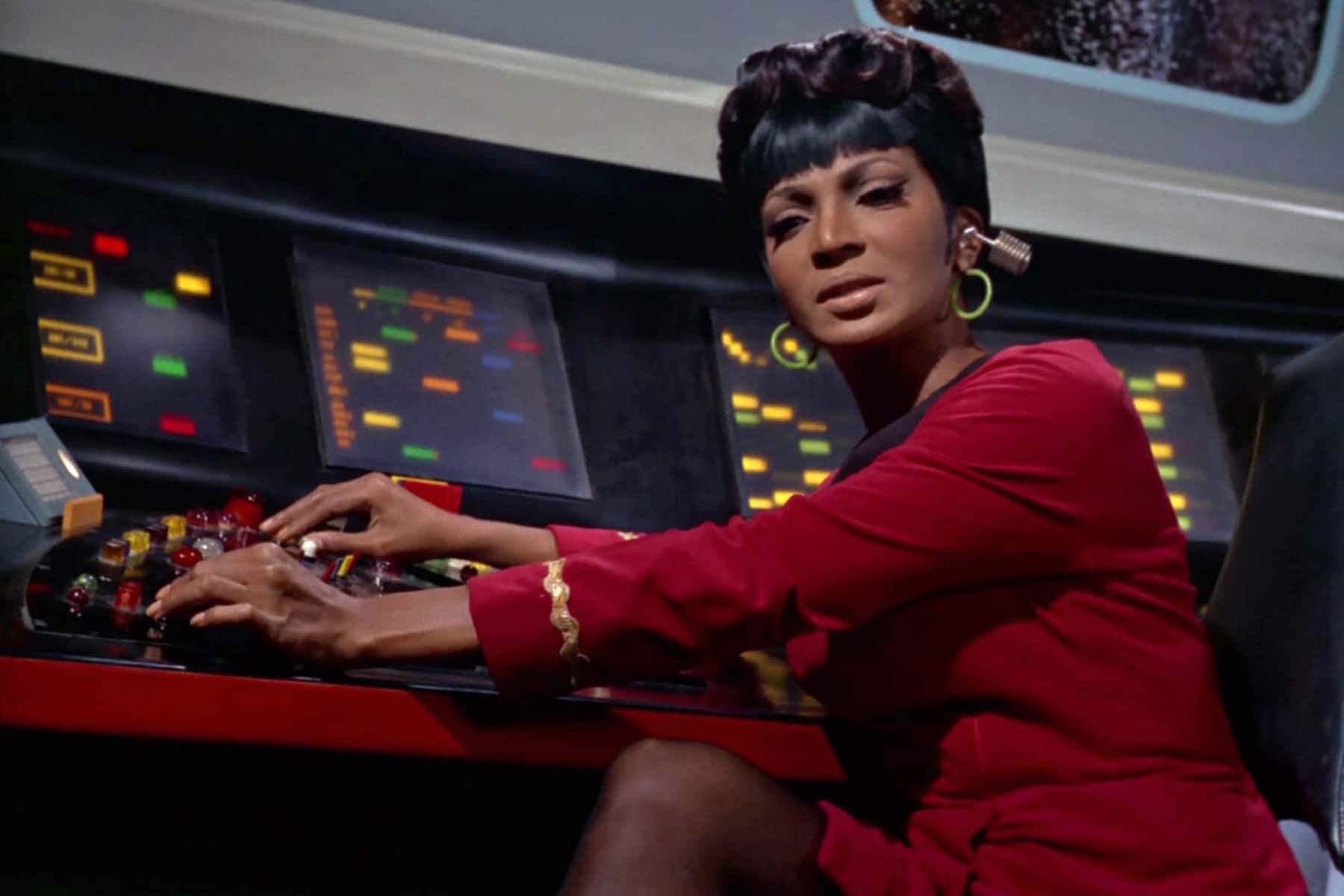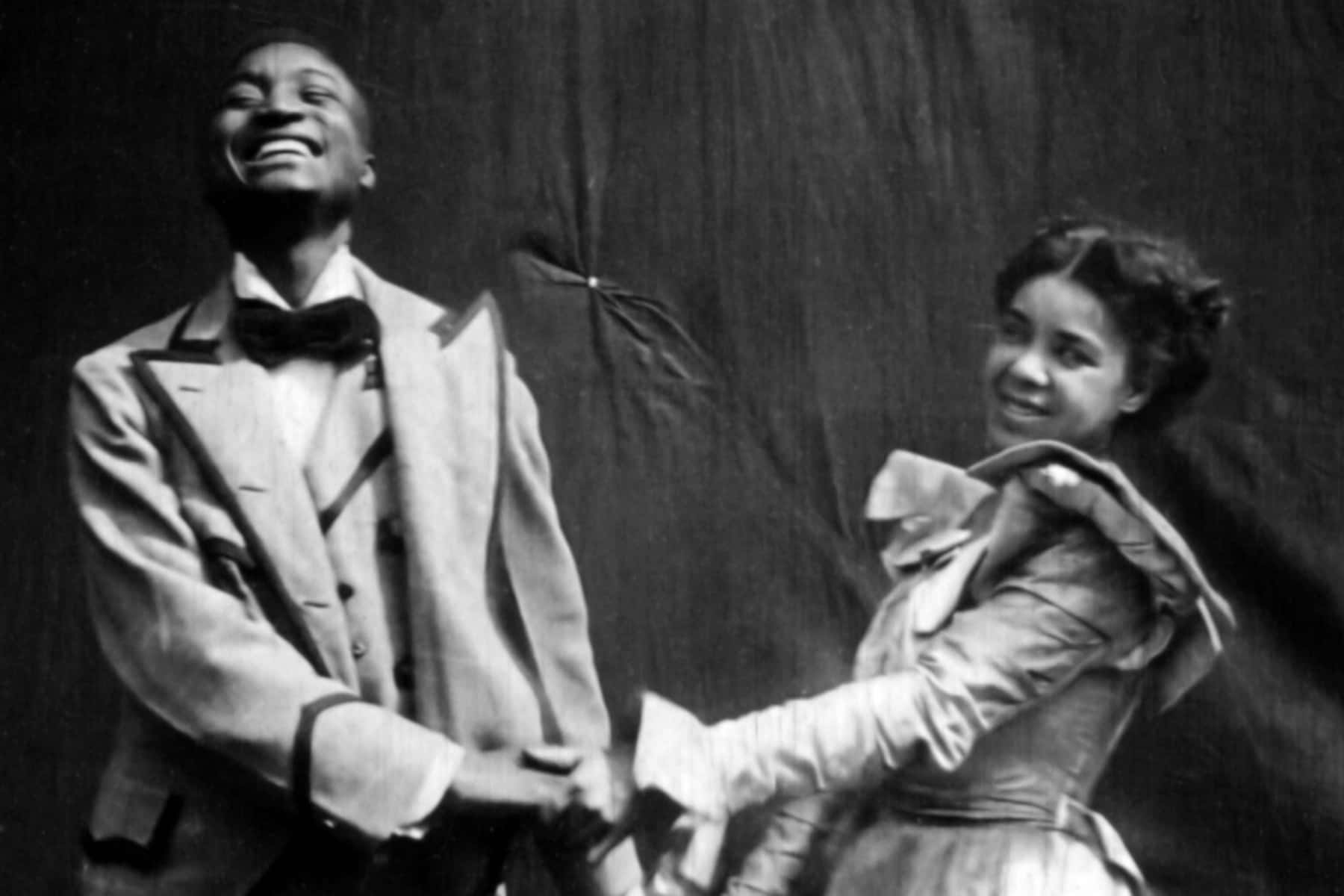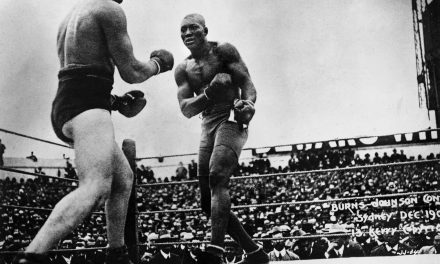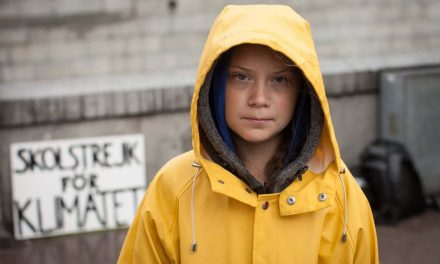
Black women have long been fixtures in science fiction film and television.
In the 20th century, they largely appeared in background roles as maids, cooks, sex workers, or dancers. Then, the 21st century ushered in high-profile roles like Halle Berry’s Storm, Danai Gurira’s Michonne, Javicia Leslie’s Batwoman, and so many more. Most recently, Marvel’s Black Panther featured numerous roles for powerful Black women characters and was wildly successful, making a billion dollars in 2018. But Hollywood didn’t decide on its own to portray Black women as heroes and women of power. The roles, their depictions, and even the credit for the parts were the result of more than 80 years of Black-led struggle and strategy. During that time, Black women had to endure both racism and misogyny on set, both of which are still prevalent in the industry.
Stepping In From the Background — From Silent Films to the 1960s
The first Black women in cinema predated the sci-fi genre and are recorded in silent films as far back as 1898 in roles that were minor and stereotypical — maid, nanny, cook, dancer, sex worker, and such— that never really progressed from the position of extras. However, at the time, this is how any person of color got work on set, especially Black women. Once there, these phenomenal women gave their best performances, showing audiences the possibilities of diverse casts.
The two earliest recorded Black women to work in sci-fi are Laura Bowman, who starred in Oscar Micheaux’s The Brute (1920) as a waitress, and Daisy Bufford, who started her career as an extra playing a housemaid in The Girl from Everywhere (1927). Both women made their mark in the earliest-known Black science fiction horror film, the 1940 monster flick Son of Ingagi.
The film was written by Spencer Williams and directed by Richard C. Kahn, both Black men who usually worked with an all-Black cast — which was rare at the time. Their films gave Bowman and Bufford a chance to go beyond the typical roles offered to Black women at the time. In Son of Ingagi, Bowman plays Dr. Helen Jackson, a scientist who returns home from Africa with a monstrous discovery, while Bufford plays Mrs. Eleanor Lindsay, who moves her family into Dr. Jackson’s house after a happy wedding.
Stepping Into the Spotlight in the Official Sci-Fi History
Just about every list of Black women in sci-fi history starts with Nichelle Nichols, who played Nyota Uhura on Star Trek, and Eartha Kitt, who played Catwoman in ABC’s Batman series. However, both Nichols and Kitt worked as extras before obtaining those pivotal roles. Nichols’ first known role was as a dancer in the 1959 film Porgy and Bess, while Kitt also began her career as a dancer in the 1948 film Casbah.
When Nichols stepped into the spotlight in 1966 as the famous Uhura of the Star Trek series, she was undeniably an audience favorite. Her popularity and importance even caught the eye of Dr. Martin Luther King Jr. Nichols often tells the story of how the civil rights leader encouraged her to stay in the role when she felt like quitting.
A New Trope in Town
In the midst of her breakout role, Nichols became the subject of another trope — a new one for Black women — as a prop for a progressive White man, to show him as anti-racist and modern. Uhura’s character on Star Trek had a close relationship with the head of the USS Enterprise — Captain Kirk, played by William Shatner — and they had the first interracial kiss on TV.
At the time, the scene rocked the country, but it was an unspoken indication that Captain Kirk (and, by extension, Shatner) was not racist and hinted that a futuristic world would go beyond old-fashioned ideas of miscegenation. Such on-screen interracial interactions, where Black women were used as a crutch to validate the characters of their White co-stars, became increasingly common.
Kitt also took advantage of the crutch trope when she donned cat ears and claws as Catwoman in 1966. Like Uhura, Catwoman was a symbol of how forward-thinking, not racist, and modern Batman (played by Adam West) was. Catwoman was Batman’s crutch as a means of endearing Batman — and, by extension, West — to audiences. But given Kitt’s powerful performance, her role ended up making her a household name.
Once audiences began to see what Black women could bring to sci-fi, they wanted more. Nichols continued to star in sci-fi roles throughout her career and remains an iconic figure, as did Kitt.
Becoming Permanent Sci-Fi Fixtures in the 1970s and 1980s
Nichols and Kitt paved the way for Black women in sci-fi throughout the 1970s. Although not very well-known today, Rosalind Cash is part of the trend, co-starring opposite Charlton Heston in the 1971 film The Omega Man, in what was essentially a crutch role.
Scores of Black actors worked in (sometimes uncredited) background roles in the sci-fi films of the 1970s — something that can only be proven by watching the films and shows. One exception was the 1972 film Blacula, a Black-created and Black-cast film that brought some of the background actors into the spotlight, in much the same way Son of Ingagi did in 1941. Vonetta McGee, Denise Nicholas, Kathy Lester, and Emily Yancy, actors from Blacula, all had a long history of credited and uncredited background roles in sci-fi films before and after Blacula. McGee’s last credited role was in 2007; Nicholas and Yancy both worked until 2015, while Lester hung up her hat in 1998.
Other Black sci-fi projects of note in post-1980s films include The Meteor Man (1993) and The Brother from Another Planet (1984). While both are well-known for their male leads, they featured several notable Black women actors, including Minnie Gentry, Renn Woods, and Rosanna Carter in The Brother from Another Planet, and Marla Gibbs, Cynthia Belgrave, Marilyn Coleman, and Nancy Wilson in The Meteor Man.
Another Trope Shift: Aunties, Oracles, Sages, and Magical Negroes
There was another shift within the genre in the 1980s and 90s. Black women who had established their careers as background extras during the ’60s and ’70s became familiar and beloved faces in the ensuing decades. Sci-fi films started featuring these older actors as the aunties, sage matriarchs, oracles, and overall magical beings who helped guide the hero to the right decision or path.
Although the “Magical Negro” trope is one that today’s cinema tries to avoid, three to four decades ago, it created a space that Black women could largely fill. These were also extensions of the mammy trope, which was exclusive to Black women. In spite of such roles being considered somewhat degrading by today’s standards, they were an upgrade from maid or dancer and often came with additional popularity and a speaking role, which equals a higher pay rate.
Whoopi Goldberg’s Guinan from the 1987 Star Trek: The Next Generation series is a perfect example. Although Guinan is a well-known character and beloved in the sci-fi community, the character embodies the Magical Negro trope. She was a bartender who often helped the White (and alien) staff on the ship solve their problems in some way.
Another example is Ruby Dee’s character of Mother Abigail in the 1994 miniseries The Stand. Besides having “Mother” in her character’s name, she was an obvious oracle for the “good” survivors of the apocalypse. She offered guidance in dreams and advice for the future. The most well-known example of the “oracle” role was played by Gloria Foster, who took on the role (a character actually named Oracle) in the 1999 film The Matrix. Mary Alice took over the Oracle character after Foster passed in 2001.
All of these characters are beloved despite the toxicity of the mammy and Magical Negro tropes, which tethered Black actors to the idea of being only useful when in service to White characters. However, these roles made it harder for studios to substitute White actors, because sci-fi viewers were expected to react negatively. Although there are a few exceptions, Black women had staked a permanent space in the genre.
Finally: The Rise of Powerful Roles for Black Women in Sci-Fi
The work that Black women in sci-fi did for more than 80 years led to massive breakthroughs in the 2000s and 2010s, taking them from the oracle, auntie, and overt Magical Negro roles to those of more independent, powerful women.
In 2016, Viola Davis’ role as Amanda Waller in the Suicide Squad franchise was the culmination of this shift.
It started in the early 2000s, with Gina Torres playing the role of Zoë Washburne in Firefly. At the time, the genre had elevated Black women to members of the squad, the team of heroes. The Black woman in sci-fi was no longer “othered” as the auntie or oracle. But she still does not have equity in screen time, lines, and agency compared with her White and male colleagues on the team. Torres played this “neutered team member” role a few times: in The Matrix franchise, in Serenity, and in Firefly.
Other Black actors who played such roles in the 2000s included Halle Berry’s Storm in the X-Men (2000) franchise, Zoe Saldana’s roles in Avatar and Star Trek (in which she played a modern-day Uhura), and Freema Agyeman’s role of Martha Jones in the Doctor Who TV series.
In the 2010s, the trend shifted once more. Black women were cast in lead roles, sometimes as the sole hero in a film or show. Berry’s Catwoman (2004) is an early example, and she became the first Black woman to play a superhero in both the DC and Marvel franchises.
From 2014 to 2018, Kellita Smith became the first Black woman to star in a sci-fi series on the Syfy network. The series, Z Nation, which was a zombie apocalypse show, was one of several that oversaturated the genre with living-dead beings in the 2010s.
The zombies gave way to an exploration of characters who had agency, who spoke loudly and took up space, or whose scowl brought fear to men. This new generation of women subverted all the tropes their foremothers had taken full advantage of to get them this far. They included Danai Gurira’s Michonne in The Walking Dead (2010), Lupita Nyong’o’s Miss Caroline in Little Monsters (2019), and Sonequa Martin-Green’s Sasha, also from The Walking Dead.
Martin-Green would go on to feature in one of the most epic moments for Black women in sci-fi, next to Smith’s Syfy milestone: She became the captain in Star Trek: Discovery in 2021 on Season 4 of the series. She fulfilled the wildest dreams of Black women in sci-fi who laid the foundation for their place in films and television and built steps high enough for Martin-Green to climb in order to lead a series dominated by White men for over 52 years.
The following year, Gurira and Nyong’o joined Angela Bassett in the groundbreaking film Black Panther as top-billed actors playing characters with power and agency, and who on a few occasions even save a White man named Everett Ross, played by Martin Freeman. The most impressive part of the film was the Dora Milaje, an army of Black women fighters guarding their male king, T’challa, played by the late Chadwick Boseman. Fighters in the army were played by Shaunette Renée Wilson, Janeshia Adams-Ginyard, Nabiyah Be, Marie Mouroum, Maria Hippolyte, and Christine Hollingsworth. These Black women were like nothing ever before seen in sci-fi: fierce, strong, strategic, and lethal.
The history of Black women in sci-fi would not be complete without discussing how, in the 2000s and 2010s, the CW Network single-handedly injected Black women into the genre with is slate of DC Comics TV shows. Candice Patton was one of the first, as Iris West-Allen in The Flash (2014). Then came Maisie Richardson-Sellers in Legends of Tomorrow (2016), followed by the women of Black Lightning (2018), including China Anne McClain, Christine Adams, and Nafessa Williams.
In a recent interview, Kaci Walfall, who plays teen superhero Naomi on the DC Comics series of the same name on CW, and who became the newest Black woman on the network, said Black women embraced her when she started on her show.
The trend is continuing on other networks as well, as Black women rise to positions of power in sci-fi. They include Anna Diop on Titans (2018) produced by HBO Max, Simone Missick and Alfre Woodard of Luke Cage (2016) on Netflix, and many others.
Does the New Frontier Lie Behind the Camera?
Today, Black women aren’t just starring in sci-fi films and TV, they are creating science fiction. Ava DuVernay’s Naomi, which was released this year, is a sci-fi show created and largely run by Black women about a Black teen (played by Kaci Walfall) from an interracial family who has superpowers. DuVernay also adapted A Wrinkle in Time (2018), centering a biracial Black girl as the protagonist who travels to an alternate universe ruled by three benevolent beings, one of whom is played by the most iconic Black woman of the modern age, Oprah Winfrey!
Misha Green’s 2020 show Lovecraft Country on HBO Max went even further, taking us outside the superhero sci-fi genre and mixing in horror and Afrofuturism. Her show highlighted the stellar acting of Aunjanue Ellis, Wunmi Mosaku, Jurnee Smollett, and Jada Harris. When the show was canceled, Green shone a light on the problems Black women face behind the camera and took to social media to expose some of the reasons behind the show’s explicable cancellation. That is the next territory to conquer.
Although things are not perfect for Black women in sci-fi, there have been tremendous improvements since the 1920s. Some Black women still get their start in the industry via uncredited positions in the background. While most projects have done away with the older, problematic tropes or use them to interrogate the racism that still lingers in the industry, it should be acknowledged that these stereotypical roles gave Black women the opportunity to create a solid space in sci-fi that no one can take away. And today, with audiences firmly behind them, Black actors and creators are poised to remake the genre into a place where Black women and their stories are normalized.
Jonita Davis
CBS/Paramount and USC School of Cinematic Arts
Originally published by YES! Magazine as How Black Actresses Fought for Science Fiction Roles for Nearly a Century















